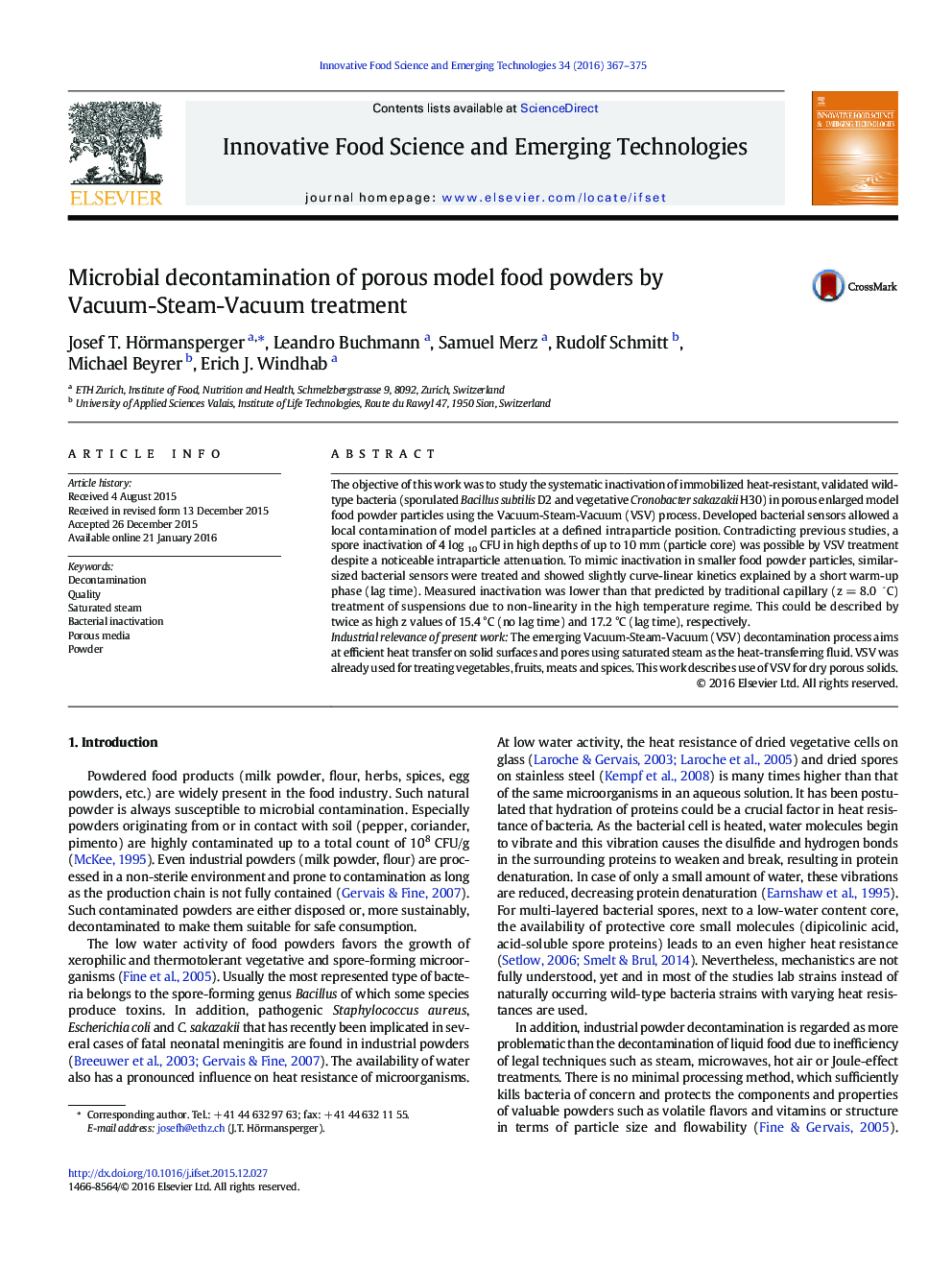| Article ID | Journal | Published Year | Pages | File Type |
|---|---|---|---|---|
| 2086388 | Innovative Food Science & Emerging Technologies | 2016 | 9 Pages |
•Subsurface bacterial inactivation during VSV treatment was studied for the first time.•Defined porous dry model particle mimics food powder particles.•Developed bacterial sensors allow local contamination of model particles.•VSV treatment leads to ≥ 4 log spore reduction even in dry model particle core.•z Values are twice as high as predicted by capillary treatment of suspensions.
The objective of this work was to study the systematic inactivation of immobilized heat-resistant, validated wild-type bacteria (sporulated Bacillus subtilis D2 and vegetative Cronobacter sakazakii H30) in porous enlarged model food powder particles using the Vacuum-Steam-Vacuum (VSV) process. Developed bacterial sensors allowed a local contamination of model particles at a defined intraparticle position. Contradicting previous studies, a spore inactivation of 4 log 10 CFU in high depths of up to 10 mm (particle core) was possible by VSV treatment despite a noticeable intraparticle attenuation. To mimic inactivation in smaller food powder particles, similar-sized bacterial sensors were treated and showed slightly curve-linear kinetics explained by a short warm-up phase (lag time). Measured inactivation was lower than that predicted by traditional capillary (z = 8.0 ∘ C) treatment of suspensions due to non-linearity in the high temperature regime. This could be described by twice as high z values of 15.4 °C (no lag time) and 17.2 °C (lag time), respectively.Industrial relevance of present workThe emerging Vacuum-Steam-Vacuum (VSV) decontamination process aims at efficient heat transfer on solid surfaces and pores using saturated steam as the heat-transferring fluid. VSV was already used for treating vegetables, fruits, meats and spices. This work describes use of VSV for dry porous solids.
